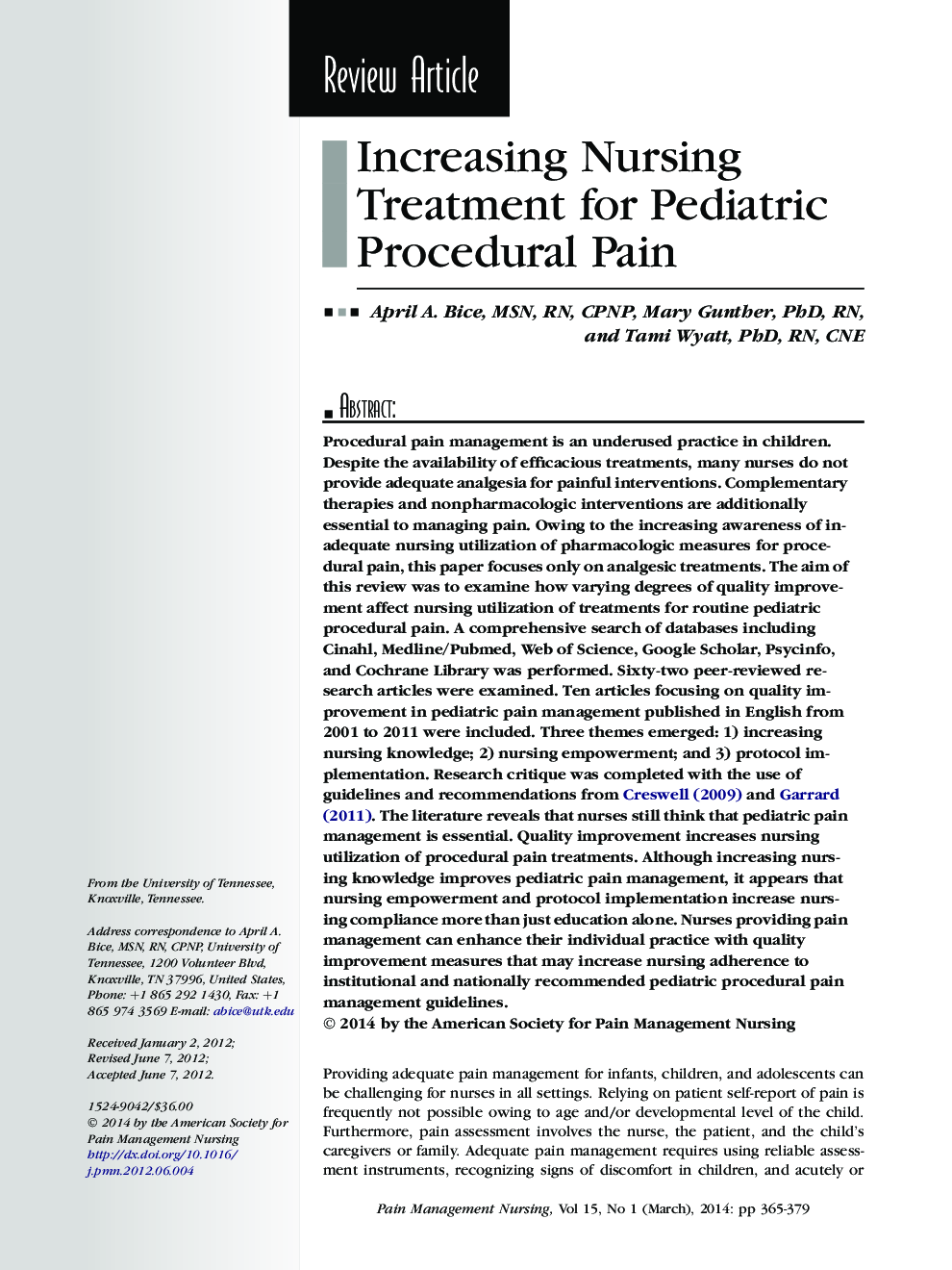| Article ID | Journal | Published Year | Pages | File Type |
|---|---|---|---|---|
| 2673712 | Pain Management Nursing | 2014 | 15 Pages |
Procedural pain management is an underused practice in children. Despite the availability of efficacious treatments, many nurses do not provide adequate analgesia for painful interventions. Complementary therapies and nonpharmacologic interventions are additionally essential to managing pain. Owing to the increasing awareness of inadequate nursing utilization of pharmacologic measures for procedural pain, this paper focuses only on analgesic treatments. The aim of this review was to examine how varying degrees of quality improvement affect nursing utilization of treatments for routine pediatric procedural pain. A comprehensive search of databases including Cinahl, Medline/Pubmed, Web of Science, Google Scholar, Psycinfo, and Cochrane Library was performed. Sixty-two peer-reviewed research articles were examined. Ten articles focusing on quality improvement in pediatric pain management published in English from 2001 to 2011 were included. Three themes emerged: 1) increasing nursing knowledge; 2) nursing empowerment; and 3) protocol implementation. Research critique was completed with the use of guidelines and recommendations from Creswell (2009) and Garrard (2011). The literature reveals that nurses still think that pediatric pain management is essential. Quality improvement increases nursing utilization of procedural pain treatments. Although increasing nursing knowledge improves pediatric pain management, it appears that nursing empowerment and protocol implementation increase nursing compliance more than just education alone. Nurses providing pain management can enhance their individual practice with quality improvement measures that may increase nursing adherence to institutional and nationally recommended pediatric procedural pain management guidelines.
